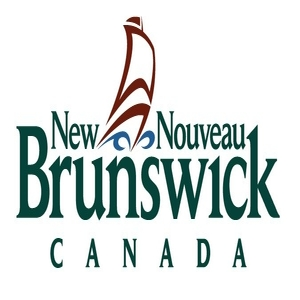wildlife
Type of resources
Available actions
Topics
Keywords
Contact for the resource
Provided by
Years
Formats
Representation types
Update frequencies
status
Service types
-

The Wildlife Refuge feature class provides the geographical boundaries (polygons) of New Brunswick's Wildlife Refuges and Wildlife Management Areas. Most of these entities were established in the mid 1900s for the management of wildlife species that were hunted, trapped or snared by providing areas where hunting, trapping or snaring could be prohibited or restricted. Some areas were included because they were recognized tourist destinations (Acadian Village and Kings Landing Wildlife Management Areas) or other areas designated for "protection". As of early 2008, hunting, trapping and snaring is not allowed in any Wildlife Refuge and some Wildlife Management Areas; while in some Wildlife Management Areas trapping and snaring are allowed but no hunting; and in other Wildlife Management Areas hunting, trapping and snaring are allowed; ie, no restrictions. Most of New Brunswick's Wildlife Refuges and Wildlife Management Areas were established in the mid-1900s for the management of wildlife species that were hunted, trapped or snared by providing areas where those activities could be prohibited or restricted. Some areas were included because they were recognized tourist destinations (Acadian Village and Kings Landing Wildlife Management Areas) or other areas designated for "protection". 1. 2. Do not confuse Wildlife Refuges and Wildlife Management Areas with Wildlife Management Zones (WMZ GIS layer).
-

A bear management area is a polygon feature that identifies a ministry-regulated boundary used to manage, administer and enforce the licensed black bear hunting tourism program.
-
This legacy Web Map Services will no longer be maintained on an ongoing basis as of December 31, 2015. It will be removed from operations as of March 31, 2016. To see the latest in DataBC WMS services please go to http://openmaps.gov.bc.ca.
-

Delineates the administrative units used by the NB Department of Natural Resources and Energy Development (DNRED) to manage populations and harvest of deer, moose, bear and furbearer species. Examples of furbearer species are beaver, muskrat, otter, mink, fox, and raccoon. Wildlife Management Zones were first established by Fish & Wildlife Branch in the early 1990s by combining climate, topography, geology and soils layers to identify unique zones with differences in basic landscape features relevant to wildlife. These were adjusted to boundaries easily recognized by the public. Most boundaries follow roads, rivers, lakes, streams or railroads. Do not confuse Wildlife Management Zones with Wildlife Management Areas and Wildlife Refuges (in the Wildlife Refuge GIS layer).
-

Broad management guidance is applied across each Cervid Ecological Zone (CEZ) to help set local population and habitat objectives. CEZs reflect the overarching cervid management intent at the landscape level. The foundation for CEZs is Ontario’s Ecological Land Classification, with consideration given to: * cervid species ranges * landscape level variations in habitat and climate CEZs build on the existing Wildlife Management Unit network while recognizing that species and habitat ranges fluctuate over time.
-

Registered Trapping Concessions (RTCs) are legal boundaries that define an area where the holder of the concession has the exclusive right to trap furbearing animals. Because trapping is done primarily along waterways, RTCs are often defined by watersheds, using height of land (ridges and mountain peaks) as their boundaries. This is the opposite of GMAs which are defined by mountains. Sometimes RTCs are grouped together to form a Group Trapping Concession (in which groups of individual share the right to trap). This may or may not involve the elimination of the component RTC boundaries. The Yukon has 360 RTCs and 13 Group Trapping Concessions. Only Kluane National Park, Kluane Wildlife Sanctuary, and Ddhaw Ghro Habitat Protection are are not covered by RTCs. This data was built using the 1:250,000 National Topographic Data Base (NTDB) as the digitizing base. Distributed from [GeoYukon](https://yukon.ca/geoyukon) by the [Government of Yukon](https://yukon.ca/maps) . Discover more digital map data and interactive maps from Yukon's digital map data collection. For more information: [geomatics.help@yukon.ca](mailto:geomatics.help@yukon.ca)
-

Habitat Protection and management are the primary focus of the Fish and Wildlife Development fund. This data includes lands used for management of habitat within the Province. Saskatchewan Environment's Fish and Wildlife Development Fund Lands (FWDF) derived from ISC's (1:20,000) surface layer.As anglers, hunters and trappers in Saskatchewan, you recognize that healthy and diverse wildlife populations are an indication of a healthy ecosystem. Your responsible conservation ethic and love of nature are making positive and vital contributions to the management and preservation of wildlife and wildlife habitat. The revenue (30 per cent) from all fur, angling and hunting licences you purchase, is used to manage, preserve and enhance fish and wildlife habitat.The fund has identified three fish and wildlife management goals:-Maintain natural habitat through conservation, biodiversity, land management and awareness of rare species.-Maintain and grow sustainable fish populations and their habitat.-Maintain game populations and ensure accessible hunting.
-
BiologicEcologic ISO Feature Dataset symbolization and publication.
-
-

Wildlife Key Areas (WKA) are locations used by wildlife for critical, seasonal life functions. WKAs are identified by interpreting observed locations of wildlife at key times of year, not through intensive habitat assessment. Polygons derived from interviews with locals and from GIS interpretation of wildlife/habitat surveys. GIS interpretation follows criteria specific for taxon and/or populations of taxon. Key Areas are based on observed locations of wildlife at key times of year, not on habitat assessment. With new information, boundaries and designations of Key Areas can change and additional Key Areas can be identified. Furthermore, Key Areas are not the only sites important for wildlife. Other information sources can identify other sites important for wildlife for reasons outside the scope of the WKA Inventory Program. Updates to Key Areas occur only periodically. For the most current information, please consult with the Regional Biologist for your area of interest. If you have questions or would like to contribute to the WKA database, please contact the WKA Inventory Program ( [wka@yukon.ca](mailto:wka@yukon.ca) ). Distributed from [GeoYukon](https://mapservices.gov.yk.ca/GeoYukon/) by the [Government of Yukon](https://yukon.ca/) . Discover more digital map data and interactive maps from Yukon's digital map data collection. For more information: [geomatics.help@yukon.ca](mailto:geomatics.help@yukon.ca)
 Arctic SDI catalogue
Arctic SDI catalogue